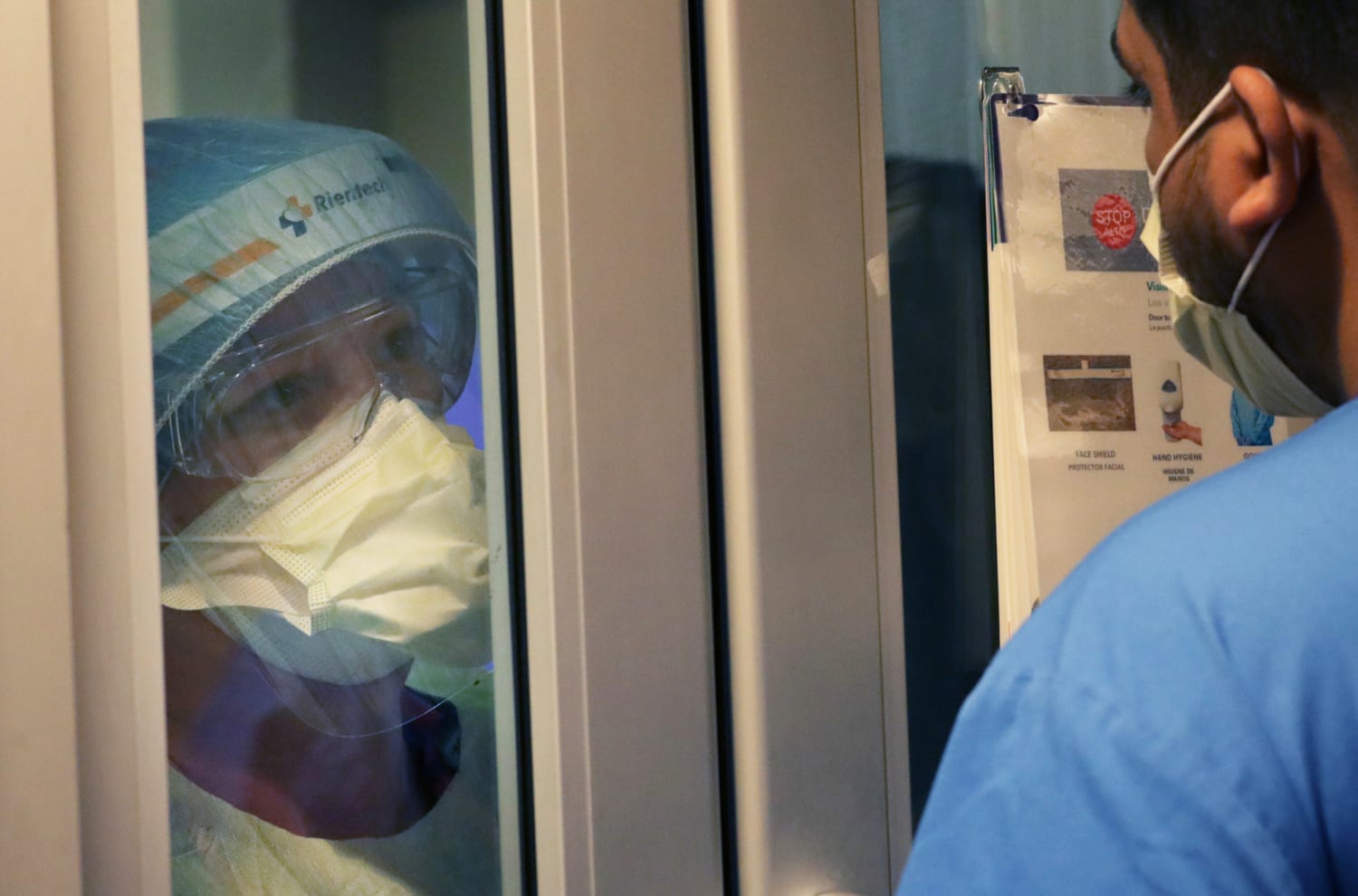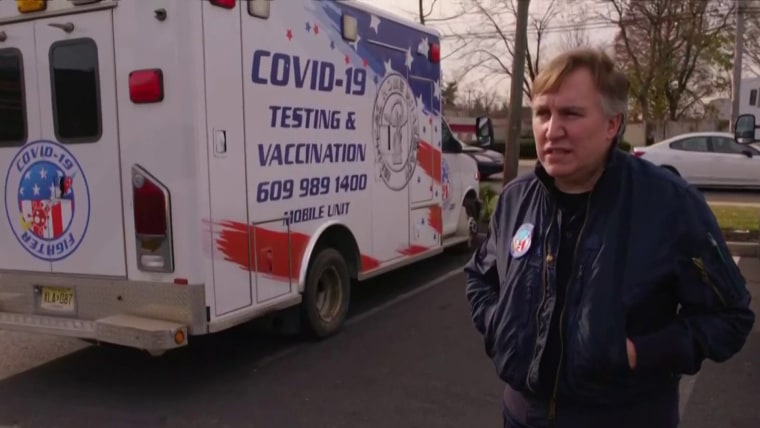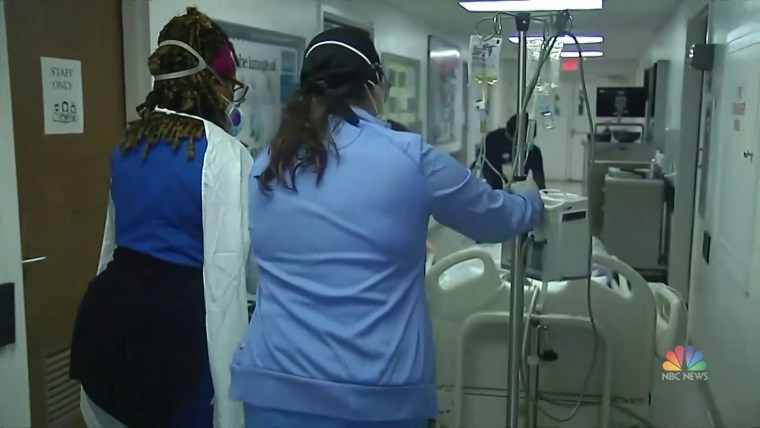Covid-19 hospitalizations are once again rising in the United States.
Among the 30-plus states that have seen increases in Covid-19 hospitalizations over the last two weeks, six stand out.
Michigan, Ohio, Indiana, Pennsylvania, New York and Illinois have accounted for the majority of the country’s increase in hospital beds filled, according to an NBC News analysis of U.S. Department of Health and Human Services data.
Full coverage of the Covid-19 pandemic
While these states make up 35 percent of the population among states with increasing Covid hospitalizations, they make up 60 percent of the added beds, the analysis showed.
The nationwide increase began in early November, when the U.S. was averaging about 45,000 hospitalizations per day. It has since ticked up to nearly 58,000 per day, according to the analysis. Health experts say they fear hospitalizations could continue to surge this winter as more Americans head indoors and the fast-moving delta variant continues to spread.
Since HHS began tracking Covid hospitalizations in early 2020, the U.S. has crossed the 50,000 mark five times. Delta’s first hospitalization surge this summer saw a peak of more than 100,000 hospitalizations, on average, and last winter’s surge peaked at more than 137,000 hospitalizations, on average.
While much of the world is focused on the new omicron variant, first identified in South Africa, delta is still a threat, as “over 99 percent of sequenced cases in the United States continue to be from” that strain, Dr. Rochelle Walensky, the director of the Centers for Disease Control and Prevention, said Tuesday at a White House Covid-19 Response Team briefing.
Hospitalizations in Michigan, which has the highest share of new hospitalizations when adjusted for population, are up 70 percent since Nov. 10. In the neighboring states of Indiana and Illinois, hospitalizations have almost doubled.
In Michigan, 3 of 4 Covid patients are unvaccinated, according to Chelsea Wuth, an associate public information officer at the Michigan Department of Health and Human Services.
Unvaccinated people make up 87 percent of Covid patients who are in an intensive care unit in the state, she said, and 88 percent of Covid patients who are on a ventilator are unvaccinated. More than 70 percent Michiganders age 16 and older have had at least one shot of a Covid vaccine, she said.
Dr. Matthew Sims, a physician and director of infectious disease research at Beaumont Health, the state’s largest health care system, said “almost all” the Covid patients coming in are unvaccinated.
Roughly 600 patients are sickened with Covid across the system as of Tuesday, he said, noting the staff is exhausted.
“We’ve been doing this for so long,” he said. “It does get tiring to the nurses, the doctors, everybody when we see this huge number of patients that are all coming in that are not vaccinated.”
He said the system’s network of hospitals and outpatient sites is prepared for a potential surge in patients this winter; they’ve gathered enough personal protective equipment and have mandated Covid vaccinations for the entire staff.
It’s still unclear whether the heavily mutated omicron variant will exacerbate the situation seen at hospitals over the colder months, experts say, though early reports suggest the new strain may cause milder symptoms.
Sims said he is concerned about omicron “and whether it is going to take over and make things worse.” It’s some 50 mutations “is scary,” he said, but he added that scientists and the public still need to wait for more data.
Download the NBC News app for full coverage of the Covid-19 pandemic
In Ohio, the state with the second highest share of new hospitalizations, health officials warned last week that the state is approaching the record admissions seen in January, when there were about 4,000 patients hospitalized with Covid statewide.
Dr. Bruce Vanderhoff, director of Ohio’s Department of Health, said during a news conference that cases aren’t occurring evenly among age groups.
Young people, particularly those between the ages of 23 and 49, have a case rate that’s 25 percent higher than the statewide average, he said.
As in Michigan, the vast majority of hospitalized patients in Ohio are unvaccinated, Vanderhoff said.
State officials continue to urge people to get vaccinated. Doing so would help hospitals in the state as they face staffing challenges.
“Almost every hospital really doesn’t have the elasticity that maybe we had this time last year to really expand capacity on a short-term notice when there’s a flood or surge in local patients,” Dr. Andy Thomas, with Ohio State University’s Wexner Medical Center, said at the same briefing. “If these trends continue through the month of December into January, we will be at a point where the hospitals in Ohio will not be able to take care of all the patients we need to take care of.”
Last week, in the state of New York, home to the fifth largest share of new hospitalizations, Gov. Kathy Hochul announced that hospitals with less than 10 percent capacity must stop doing elective surgeries until at least Jan. 15, 2020.
There are around 50 hospitals that meet that criteria, the vast majority of which are upstate, Hochul said during a press conference last Thursday.
Dr. Celine Gounder, an infectious disease specialist at NYU Langone Health in New York City, said people may be getting tired as the country approaches two years into the pandemic.
People “think in terms of personal action, personal responsibility, personal freedom, and unfortunately that’s not how viruses transmit and infect,” she said.
Follow NBC HEALTH on Twitter & Facebook.
Source: | This article originally belongs to Nbcnews.com












